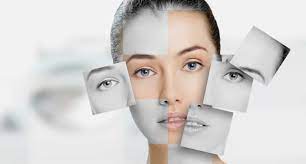Rhinoplasty Surgery
Here are the steps most Rhinoplasty Surgeons take during surgery. The following steps usually constitute a standard Rhinoplasty procedure
Anesthesia
Medicines are given during the surgical procedure for your convenience. The options include general anaesthesia or intravenous sedation. Intravenous sedation numbs the immediate region of the procedure and in conjunction with local anaesthesia, the patient is also given IV sedation to help them relax during the surgery. During the rhinoplasty procedure, a general anaesthesia may also be used which puts the patient into a deep sleep. Your doctor will prescribe the right medicine to meet your individual needs.
Incisions
The incisions that are used for rhinoplasty differ according to whether the operation is open or closed. The incisions are made in an open rhinoplasty around the columella, the stip of tissue that divides the nostrils. This method is usually known as more invasive, and is reserved for major surgeries. Closed rhinoplasty requires secret incisions inside the nose, and is used for smaller nose shape changes. Through these incisions, the skin is raised which covers the nasal bones and cartilage, allowing access to form the nose structure.
Monitoring
Your doctor can monitor your vital signs, such as your breathing rate and blood pressure, during the procedure to ensure that your body handles the procedure correctly. These monitors are for the well-being of the patient, and rarely think about something.
Reshaping the structure of the nose
If the incisions have been made, the nose reshaping procedure can be done by the doctor according to what was discussed with the patient prior to the surgery. Removing the bone or cartilage can reduce a broad nose. Often surgery may involve the addition of cartilage, for this reason the septum, the partition in the middle of the nose, is most widely used, and sometimes cartilage from the ear or sometimes a piece of rib cartilage may also be used. This can be straightened if the septum is deviated and the protrusions within the nose can be reduced to improve breathing.
The closing Incisions
When the nose structure is sculpted according to the desired form, the doctor will cover the incisions with small stitches. Additional incisions can be made in the nostril creases to change their size. Usually a splint is applied to hold the nose in place while it recovers, and also to protect it from further trauma, some patients may have internal splines or tubes. After the surgery, the patient is then taken to a recovery area to be monitored for a brief period of time to ensure that the vitalities of the patient remain controlled until it is safe to go home. Few patients stay in the hospital for observation overnight, while most patients are allowed to go home in just a few hours after surgery. Before the surgery, patients should have been advised by their doctor to have someone available after the short period of recovery to pick them up. Since having a rhinoplasty operation, you won't be able to drive home, because you'll probably feel nauseous, exhausted and unpleasant right after surgery.
Recovery
Your doctor can put a plastic or metal splint on your nose after surgery. The splint helps your nose maintain its new form when healing. They can even put nasal packs or splints within your nostrils to protect your septum that's the part of your nose between your nostrils.
After surgery, you will be treated in a recovery room for at least many hours. If everything is well, you 're going to leave later that day. You will need someone to bring you home, since you will still be affected by anaesthesia. If it's a complex operation, you can need to stay in hospital for one or two days.
You'll want to rest to avoid bleeding and swelling with your head raised above your stomach. If your nose is swollen or cotton lined, you can feel congested. Typically people are expected to keep splints and dressings in place for up to one week after surgery. You may have absorbable stitches, which means they'll dissolve and don't need removal.
Rhinoplasty may affect the area around your eyes, and for a few weeks you can feel temporary numbness, swelling, or discolouration around your eyelids. This can last for six months in extreme cases and mild swelling can continue for longer. To reduce discolouration and swelling you should apply cold compresses or ice packs.
Follow-up treatment after a rhinoplasty is critical. Keep your appointments, and follow the directions of your doctor.
While rhinoplasty is a relatively safe and simple operation, it may take some time to recover from it. Your nose tip is particularly sensitive and can stay numb for months and swollen. In a few weeks you will be fully healed, but some effects will last for months. It could be a whole year before you can completely understand your surgery end result.
Dr. Priyadarhan is among the most respected nose surgeons in the country. He possesses over a decade of experience in dealing with all kinds nose surgeries. Owing to his qualifications and vast experience in Plastic Surgery, he has established himself as one of the pioneers cosmetic nose surgery. He is one of forerunners who started Rhinoplasty surgery in Bangalore. Contact now - +91 74069 87779



Comments
Post a Comment